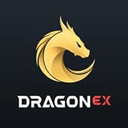
Review on Huobi Global by Robiul Islam

Getting started with Huobi is easy.
The interface looks pretty, and it’s easy to use. Its web based trading platform seems like one of the best ones in all crypto exchanges. Many centralized exchanges serve as the sole, centralized market maker. In contrast, It also allows you to trade over the counter (OTC). This means that you can buy and sell cryptocurrencies peer-to-peer on this exchange. Even though this option exists on the exchange, it has yet to gain adoption from traders. Various commenters have said that there is a lack of OTC offers. Still, this is still an innovative technical feature.
If you are a margin trader, It has a separate platform specifically for this. You can access this by going to the margin tab in the header. The amount of leverage you can have varies from coin-to-coin.
Compared to other exchanges, It continues to excel from a security perspective. Many top exchanges suffer from large-scale hacks, with varying results in terms of trading volume afterward. In 2015, a Bitstamp hacker withdrew 12,000 BTC from Huobi. This issue did not relate to the security of Huobi. Huobi reported a DDOS attack in 2015 but this did not cause a security breach.
It has a 0.2 percent fee that applies to both market makers. In comparison, other top exchanges like Binance have 0.1 percent fees. Meanwhile, GDAX has 0.3 percent fees. It has 199 coins and 459 trading pairs. There are three major crypto markets for trading pairs (USDT, BTC and ETH) and one major fiat market (USD) for the US market.
It has withdrawal limitations based on various levels of user verification. One thing you will notice is that withdrawal amounts vary greatly depending on your citizenship, Compared to most exchanges, it has above average customer service experience. Customer support is available 24/7, and response times only take two to three hours on average. Many consider this to be a rarity in the space.
It might seem that exchange is doing just like Binance but in my opinion, there are significant differences between the two.
Updated 6 years ago
Rating has not been changed
Recently Huobi Global
announced a partnership with layered blockchain network Nervos to develop a new public blockchain focused on decentralized financial (DeFi) services.
Nervos is providing the technology for the new blockchain platform, which will be launched in partnership with Huobi as part of a joint initiative to accelerate the future of decentralized finance. The project is expected to open source in Q3 this year, testnet launch in Q1 2020, and mainnet launch in Q2 2020.
The project will support decentralized identifier (DID) and implement identity protocols such as Know Your Customer (KYC) verification to meet Anti-Money Laundering (AML) requirements and ensure full regulatory compliance.
Pros
- The interface looks wonderful, and it’s fairly easy to use.
- Access to a number of digital coins and tokens.
- Competitive fees, 24/7 customer service.
- Margin trading available, but complicated.
- CNY deposits done via third parties.
- Available on desktop Android IOS trading apps.
- Pre-trade education programs for new users.
Cons
- Has previously been charged of misrepresent trading volumes.
- Minimal information in English.










